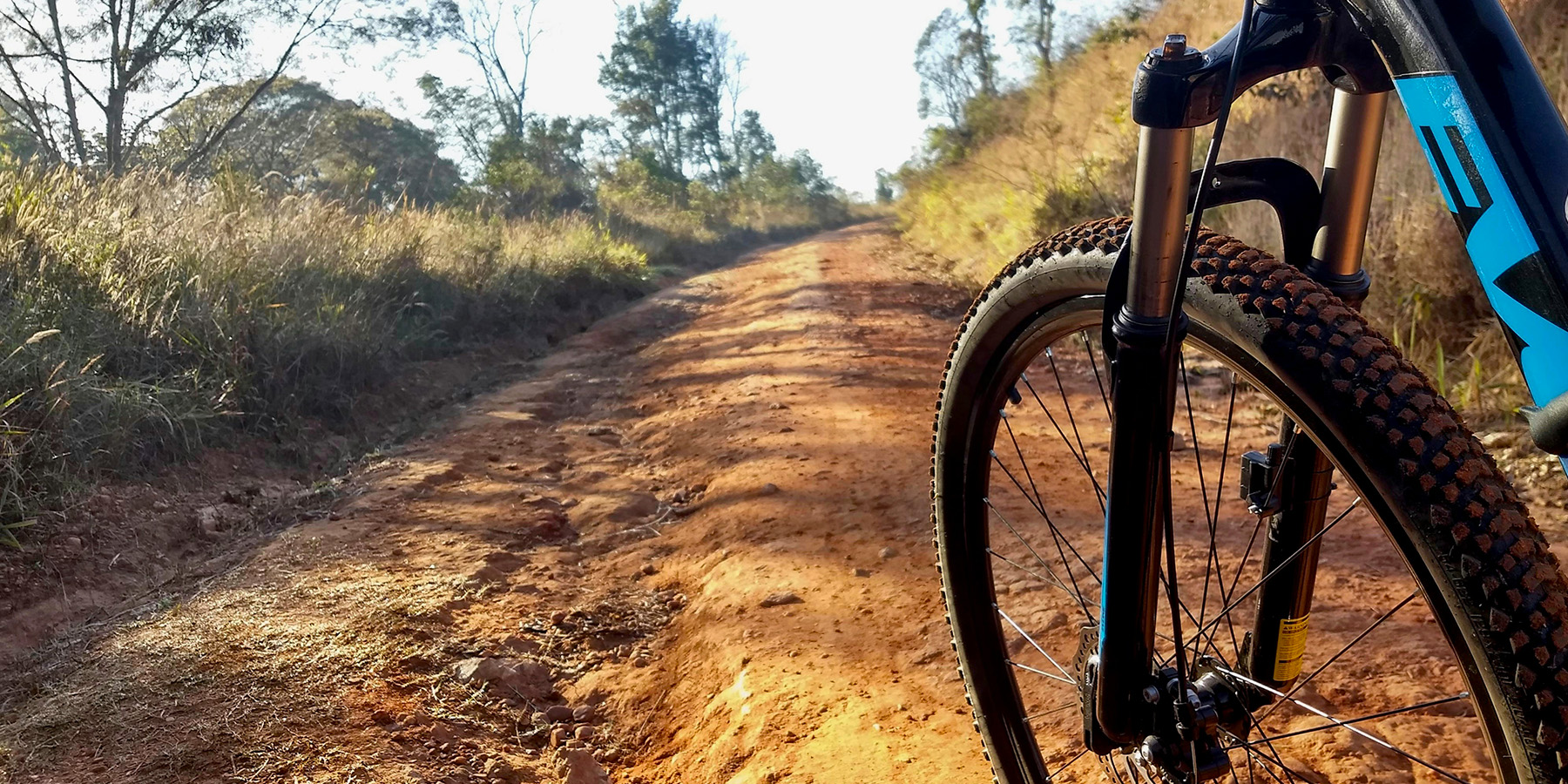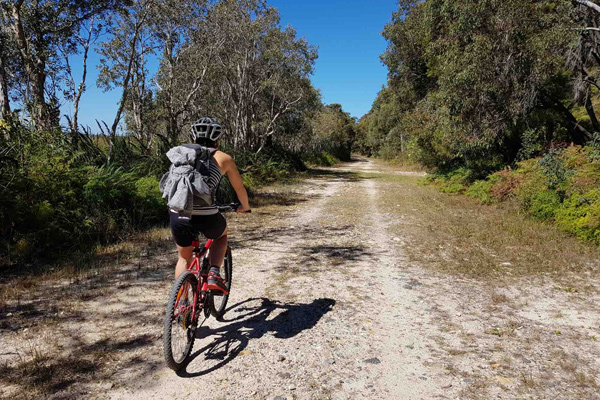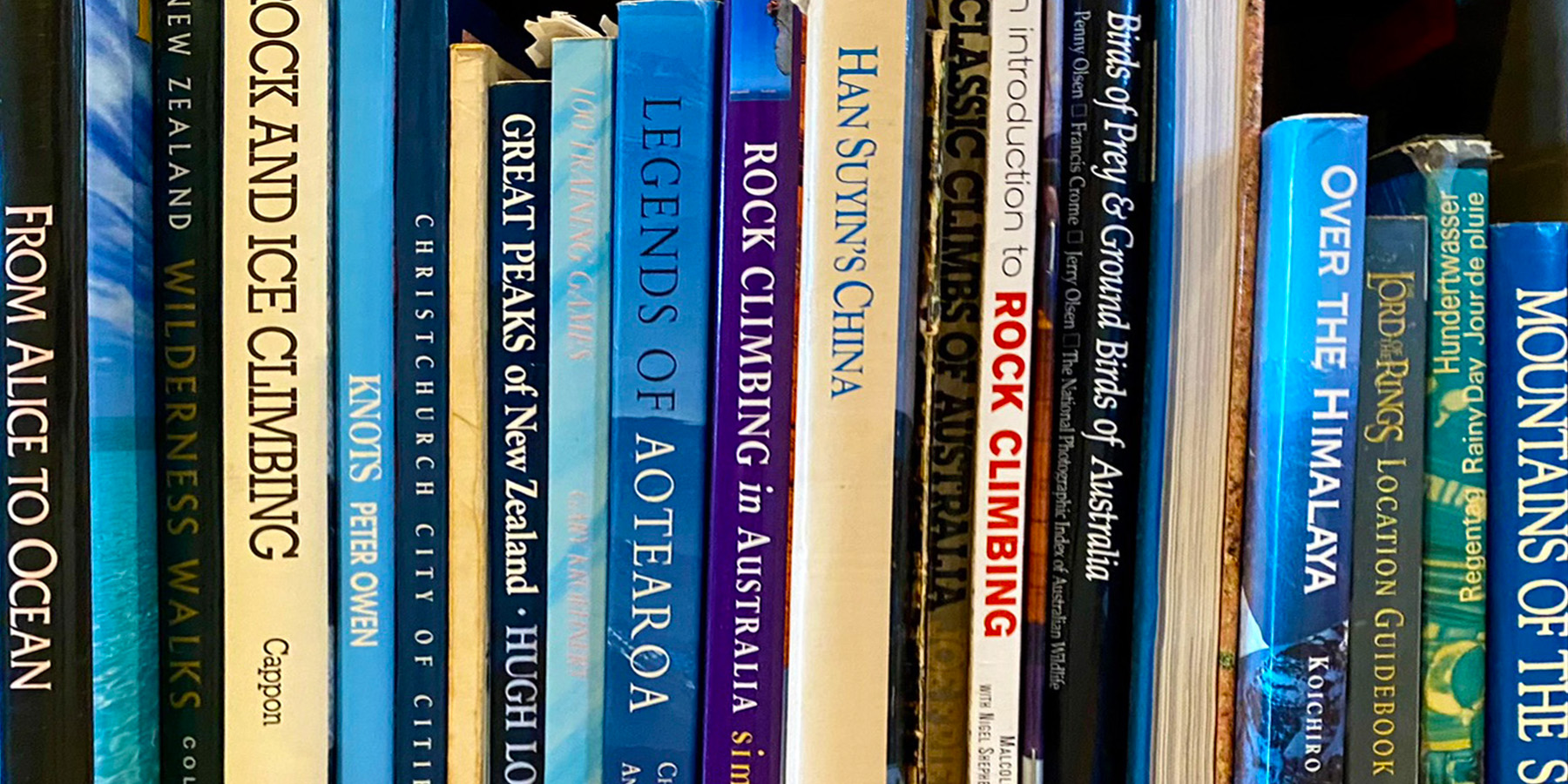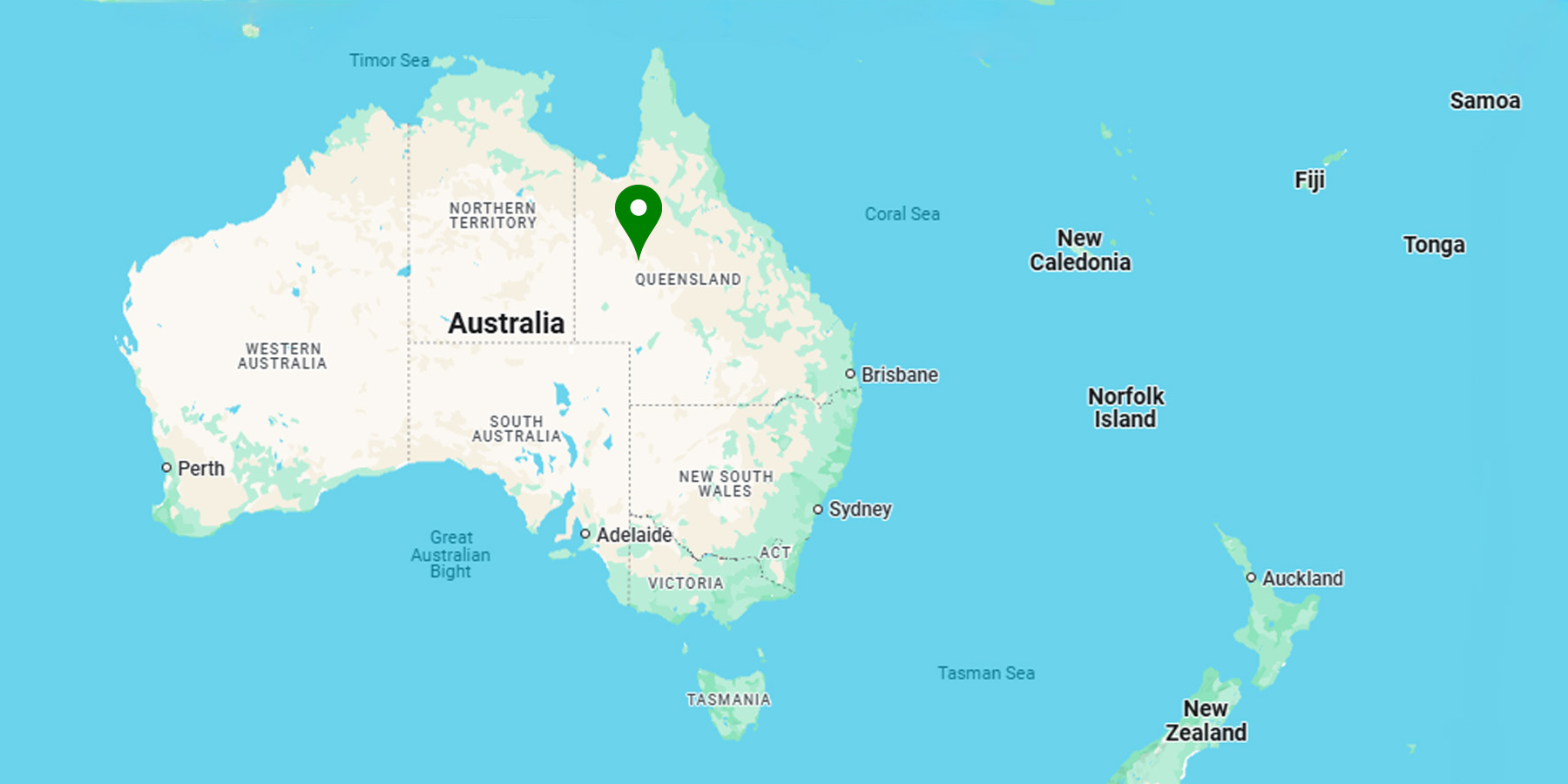
Jaime Dantas (Unsplash)
What is mountain biking?
Riding off-road, often over rough terrain, using specially designed mountain bikes.
Mountain bikes share similarities with other bikes, but incorporate features designed to enhance durability and performance in rough terrain.
Mountain biking can be performed almost anywhere from a back yard to a gravel road, but the majority of mountain bikers ride off-road trails, whether country back roads, fire roads, or singletrack (narrow trails that wind through forests, mountains, deserts, or fields)
Mountain biking can generally be broken down into multiple categories: cross country (XC), trail riding, all mountain, downhill, freeride, slopestyle, dirt jumping, and trials. The vast majority of mountain biking falls into the recreational XC, Trail Riding and Enduro categories.
This individual sport requires endurance, core strength and balance, bike handling skills, and self-reliance. Advanced riders pursue steep technical descents and, in the case of freeriding, downhilling, and dirt jumping, aerial maneuvers off both natural features and specially constructed jumps and ramps.
Mountain biking can be performed almost anywhere from a back yard to a gravel road, but the majority of mountain bikers ride off-road trails, whether country back roads, fire roads, or singletrack (narrow trails that wind through forests, mountains, deserts, or fields). There are aspects of mountain biking that are more similar to trail running than regular bicycling. Because riders are often far from civilization, there is a strong ethic of self-reliance in the sport. Riders learn to repair their broken bikes or flat tires to avoid being stranded miles from help. Many riders will carry a backpack, including a water bladder, containing all the essential tools and equipment for trailside repairs, and many riders also carry emergency supplies in the case of injury miles from outside help. Club rides and other forms of group rides are common, especially on longer treks. A combination sport named mountain bike orienteering adds the skill of map navigation to mountain biking.
Source: Wikipedia
Where to Ride
Riding can be a part of any Queensland holiday. Hit the trails in the morning, and then spend the rest of the day discovering more of the state’s authentic and inspiring destinations.
Park Rangers, volunteers, clubs, local councils and contractors are at work to create and maintain world-class mountain biking opportunities in Queensland’s parks and forests. Long-term protection of the environment goes hand in hand with creating great trails for you to enjoy.
Where to RideMountain Bike Australia
Click to download

QLD MTB Strategy
Mountain Bike Australia received funding through the Qld Government’s Sport and Recreation Planning Program to develop a mountain bike Strategy for Queensland. Stakeholder and community consultation was integral to the development of the Strategy and included consultation with riders, clubs, trail care alliances, land managers, state and local government authorities.
The Strategy provides a high level document to re-enforce and support future investment decisions and strengthen advocacy for the development of mountain bike trail networks and supporting infrastructure.
Read the complete document to gain a full understanding of the objectives, methodology, recommendations and outcomes.
A little inspiration ...
Related Articles
Bikepacking North Stradbroke Island

The Ultimate Brisbane Bikepacking Trip
A new article published by We Are Explorers on the bikepacking North Stradbroke Island. This two day cycle around North Stradbroke Island, which the local Quandamooka people know as Minjerribah, gives you major bang for buck. Plus you only need public transport to get there!
Source: We Are Explorers
E-bikes and the Impact on Off-road Cycling

While traditional bike technology is likely to continue to stabilise, the rapid emergence of the E-bike is likely to have a profound impact on off-road cycling. As technology improves the bikes will become a much more common feature on trails, making cycling activities more accessible to more people. Being able to cycle at higher average speeds, cover longer distances and ride up hills more easily makes e-bikes an attractive option for recreation and commuting.
Source: Treadwell
Useful Links & Resources
NZ Cycle Trail Design Guides
With the recent release of the Department of Conservation’s own service standards for tracks; organisations, clubs and land managers may be wondering which specification they should be using when designing, building and auditing trails on their land. There are now three design guides for New Zealand, sitting with three different organisations.
The good news is that there is a very good level of consistency running through the three documents in the key areas of trail design and specification. NZCT assimilated key information from Recreation Aotearoa’s work into their 2019 update, and DOC have drawn key information from both the Recreation Aotearoa and NZCT guides for their service standards.
The level of consistency is such that a trail built or audited to any of the three guides will fit equally well within the targeted grade category (Grade 1 Easiest to Grade 6 Extreme). And importantly, for the user experience there should be little noticeable difference in either expectation, enjoyment or safety.
How do you know which one to use?
We recommend this approach, which fits with the desired purpose of each document:
- For design, construction and maintenance of tracks on land managed by the Department of Conservation, use the DOC Cycle Track Service Standards (2020)
- For planning, designing or building parts of the New Zealand Cycle Trail, use the NZ Cycle Trail Design Guide (2019)
- For developing, building, maintaining and auditing a mountain bike trail, use the NZ Mountain Bike Trail Design and Construction Guidelines (2023)
Each guideline has a specific purpose while delivering similar end products. The NZ Mountain Bike Trail Design and Construction Guidelines is the only one of the three to detail specific requirements for descending trails – this area is absolutely relevant with modern trail systems, where often the majority of trails in a network are directional.
Source
Recreation Aotearoa
Trail Resources
Professional and volunteer trail builders, clubs and land management agencies often have resources and equipment that make the task of constructing and maintaining trails and collecting trail usage data a whole lot easier – Handy trail tools are available on the Trail Resources webpage.
Source: MTBA
Guidelines for a Quality Trail Experience

A Bureau of Land Management (US) and International Mountain Bicycling Association coolaboration – guidelines that will help improve the design, construction, and management of mountain bike trails all across the country.
Quality is difficult to define but easy to recognize. For the purposes of the Bureau of Land Management’s Guidelines for a Quality Trail Experience, quality is defined as excellence. In the context of mountain bike trails, excellence is realized when a trail design merges the desired outcomes and difficulty that a rider seeks with the setting in which the outcomes are realized. These variables ultimately equate to an overall level of sustainability that protects resources while simultaneously providing a rider with the outcomes they seek.
Quality implies a sincere commitment to attaining the highest practical standard. With regard to a quality mountain bike trail experience, several attributes must apply. A quality mountain bike trail (on BLM-administered land) is one that is:
- Appropriate to a particular place and setting
- Environmentally and socially sustainable
- Economically responsible, taking into account long-term costs associated with maintenance and administration
- Outcomes-focused, able to provide the targeted experience and benefits for the identified rider skill level
Download in original file size: IMBA-Guidelines for a Quality Trail Experience
Mountain biking and cycling in Queensland’s parks and forests

Click for a taste of what Queensland’s parks and forests have to offer.
- Gold Coast
- Brisbane
- Southern Queensland Country
- Sunshine Coast
- Southern Great Barrier Reef (Gladstone, Bundaberg and Capricorn regions)
- Whitsundays and Mackay
- Townsville North Queensland
- Outback Queensland
- Tropical North Queensland
- More on offer!
- Know your limits
- Ride responsibly
- Ride safely
For the latest trail information, maps, grades, distances, riding times and other details, visit npsr.qld.gov.au/parks.
IMBA Trail Difficulty Rating System
The IMBA Trail Difficulty Rating System is a basic method used to categorize the relative technical difficulty of recreation trails. The IMBA Trail Difficulty Rating System can:
- Help trail users make informed decisions
- Encourage visitors to use trails that match their skill level
- Manage risk and minimize injuries
- Improve the outdoor experience for a wide variety of visitors
- Aid in the planning of trails and trail systems
Redlands City Council Cycling Trails
There are lots of interesting trails and paths that you can explore. Don’t forget your bike helmet!
Mountain Biking Adventure Activity Standard
Adventure Activity Standards (AAS) are minimum, voluntary guidelines for conducting outdoor recreation activities . Designed primarily for organisations conducting outdoor recreation activities where the participants are dependent on the activity provider, they are also a useful reference for all outdoor enthusiasts.
Mountain Biking (MTB) is an outdoor recreation activity that is experiencing an increase in participation numbers. A relatively “new” activity, this increase in participation brings with it a raft of issues.
Go to Industry Forms for info and reports on:
- NQ Mountain Bike Forum 2024
- NQ Mountain Bike Forum 2018
- SEQ Mountain Bike Forum 2017
Codes of Conduct for Mountain Biking
Codes of conduct designed to promote responsible and safe mountain biking while minimising risk, reducing the potential for conflict with other trail users and countering negative environmental impacts.
Simply put …
Ride Safe
- Control your speed
- Pass with care
- Be courteous
Be Prepared
- Carry water, food, repair kit
- Take a map, mobile phone and first aid kit
Prevent Trail Damage
- Avoid muddy trails
- Stay on the track
- Avoid skidding

RESPECT Yourself, Others and the Environment
Mountain Biking Tips, Techniques and Skills
- 10 Essential MTB Skills for Beginners
- 9 Need-to-Know Mountain Biking Tips for Beginners
- Basic Mountain Biking Techniques
- 10 Not-So-Obvious Tips that Every Beginning Mountain Biker Needs to Know
- Top 10 Essential MTB Skills – Ten Mountain Bike Handling Tips
- Top 10 Tips for Riding Singletrack - How to Ride Singletrack Faster
- 10 Ways to Improve Your Mountain Biking
- Transform your Skill
Find a book!
Search for mountain biking books and DVD’s in the Shop.
(search in Shop Categories)
Discover
Search for mountain bike activity providers in Discover. (search on ‘Mountain Biking’ in Select Activity)
Recommend a Resource
Have an interesting or useful resource or link to share?
Let us know by Recommending a Resource





